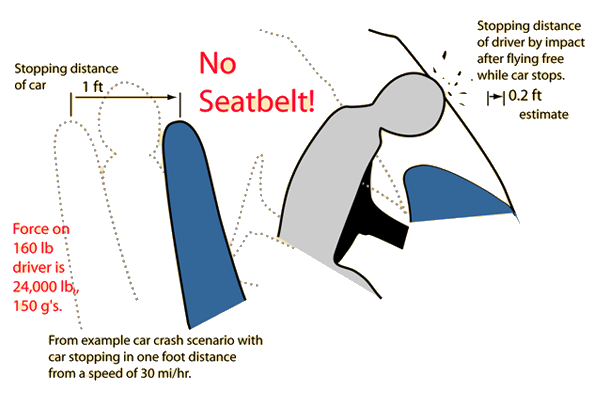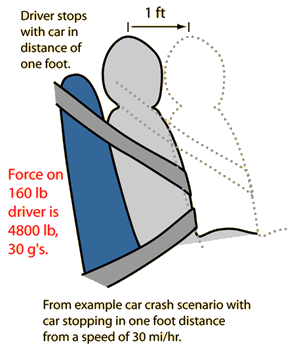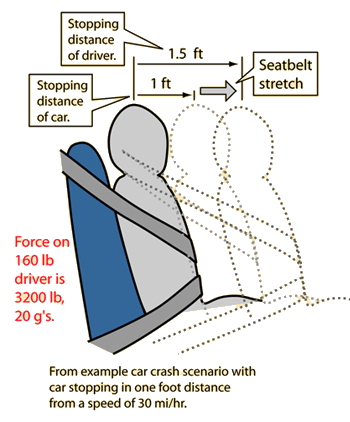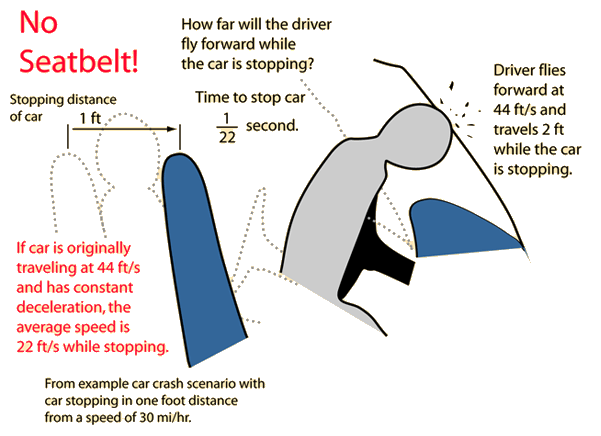No Seatbelt!
With no seatbelt to
stop the driver with the
car, the driver flies
free until stopped suddenly
by impact on the steering column, windshield, etc. The stopping distance is estimated to be about one fifth of that with a seatbelt, causing the average impact force to be about five times as great. The work done to stop the driver is equal to the average impact force on the driver times the distance traveled in stopping. A crash which stops the car and driver must take away all its kinetic energy, and the work-energy principle then dictates that a shorter stopping distance increases the impact force.

Warning! This is stated in terms of the driver, but any person in the vehicle who is not constrained by a seatbelt is subject to these extreme dangers. A seatbelt stops you with the car, which is almost always a much larger stopping distance than your stopping distance when you are flying free and collide with something. Riding in the back of a pickup truck or holding onto a car in any way takes away the protection of a seatbelt and airbag. Since the force to stop your body in even a low speed collision is in the range of tons, there is no way you can hold on and prevent injury. A shorter stopping distance always means a greater impact force on you. No exceptions - it's the law (physical law, that is)!
|
Index
Work-energy principle
Car crash scenario |



